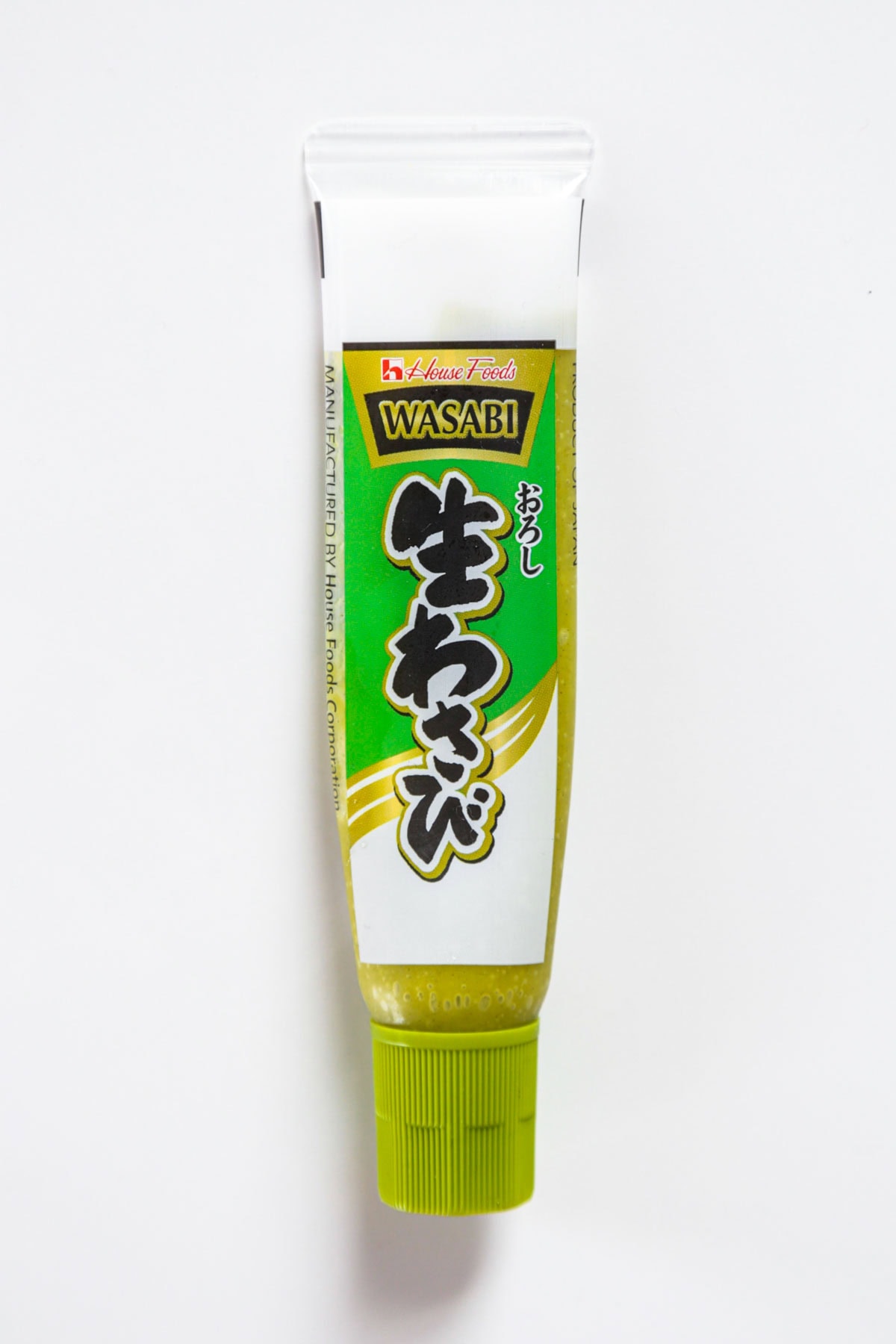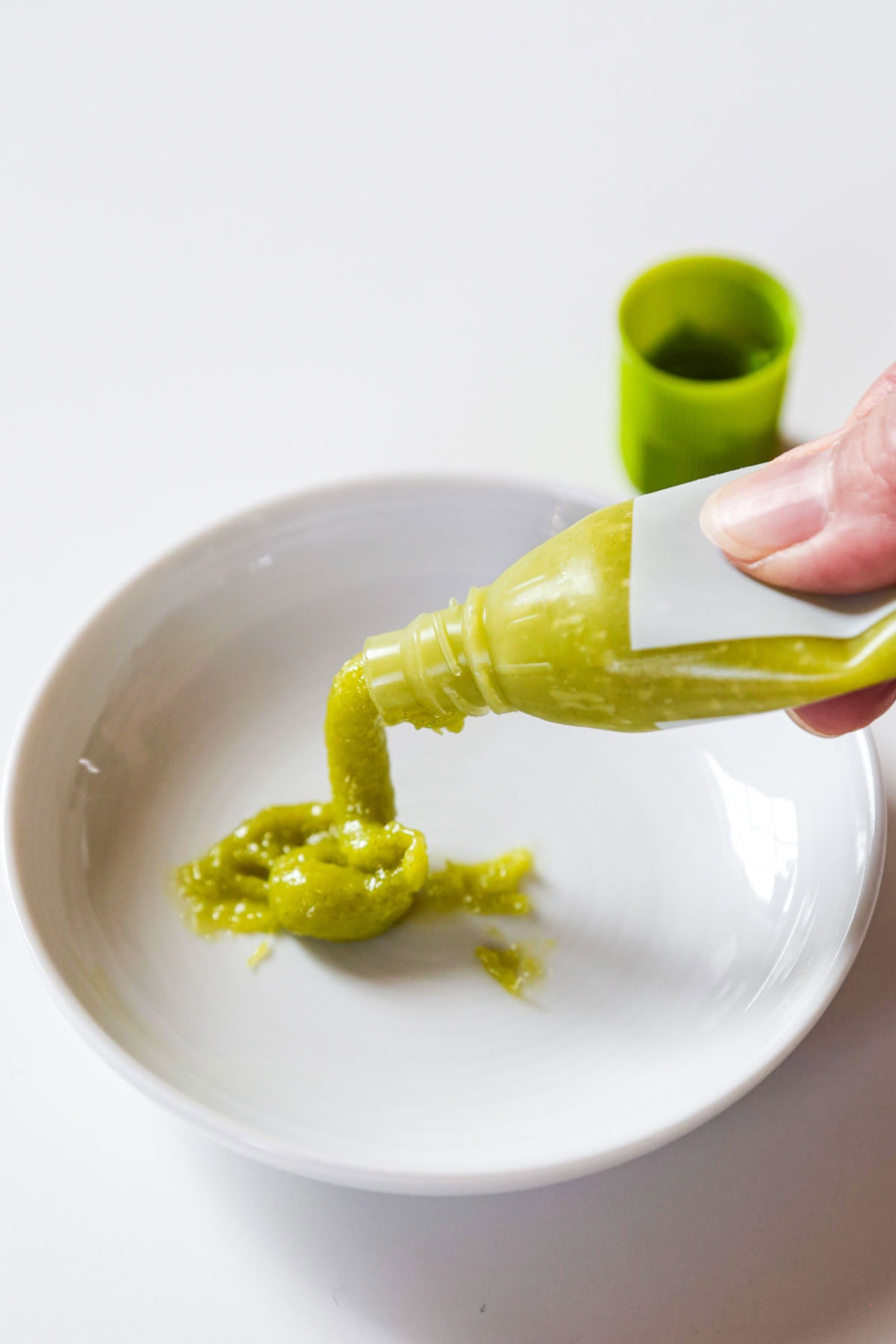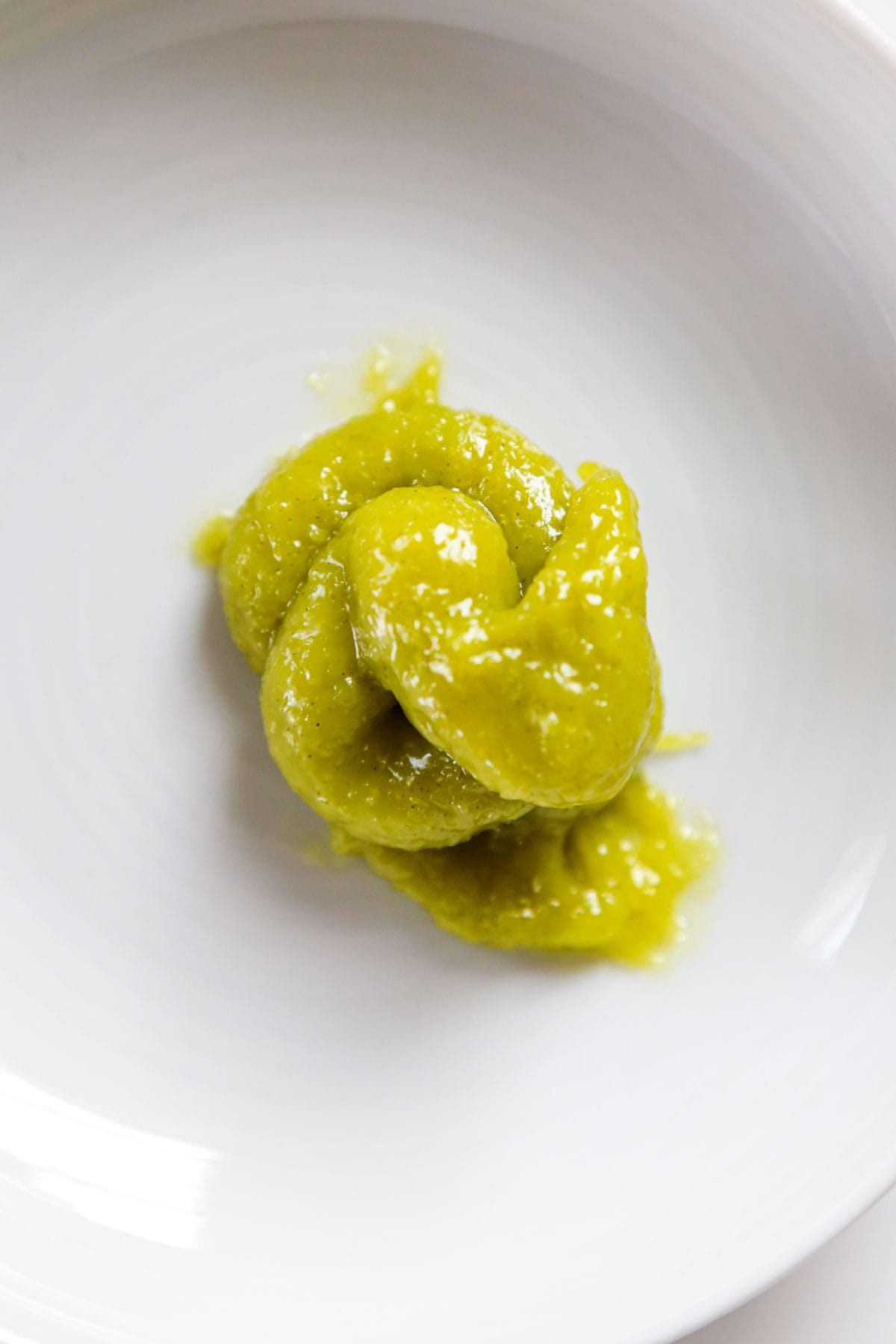
Table of contents
What Is Wasabi?
Wasabi, also called Japanese horseradish, is a light green root vegetable stemming from a plant in the Brassicaceae family. It’s most often served in the grated form and used as a sushi condiment or as a seasoning to other Japanese dishes.
You’ve probably come across wasabi if you are a frequent sushi eater. What you may not know is that the wasabi you are eating most likely isn’t the real thing. Most Japanese restaurants outside of Japan uses imitation wasabi made out of horseradish, mustard powder, and some kind of green food coloring.
Real wasabi is very hard to get a hold of. The plant requires loads of water to grow, making it very habitable in stream beds and wet fields across Japan. Each plant takes a long time to grow, with harvesting rates reigning from one and a half to three years. Fresh wasabi isn’t spicy at all. It’s mostly sweet and grassy with a pungent aroma.

How To Use Wasabi
The most popular use for wasabi is as a condiment for sushi such as nigirizushi and maki rolls. The green paste is typically added to soy sauce or spread directly on the fish to add sweetness and some heat.
While sushi is the most popular way to consume wasabi, it’s also used as a seasoning for other traditional Japanese dishes. It can be added to salad dressings, soba noodles, soups, stews, marinades, or as a spread on a sandwich. The mixture of heat, sweetness, and grassiness adds depth of flavors.
How To Cook With Wasabi
Cooking with wasabi is a delicate art. Too little and not enough flavor is present. Too much and the whole dish is overwhelmed with heat. Finding the right balance is key to the success of a dish. Here are some of our favorite ways to incorporate wasabi into our cooking:
Storage
If you are lucky enough to come across fresh wasabi, the best practice is to keep it in a glass or jar of water, in your refrigerator. Keep the stems out of the water and ensure that there is fresh water in the glass daily. With this method, the wasabi should last for up to 12 weeks.
Imitation wasabi paste (the ones sold in stores in a tube) should be stored in the fridge once opened, and consumed within 30 days. If you are looking for a long-term storage solution, go for powdered wasabi. The powder can be stored just like most spices and will keep its flavor for two years.

Where To Buy Wasabi
Fake wasabi (the ones sold in tubes) can easily be found in local grocery stores and most Asian supermarkets. Powdered wasabi can be found in Japanese supermarkets and sometimes Chinese grocery stores.
If you are looking for real wasabi, you will have to shell out more money and do some digging. Because of the intense growing process, the plant’s cost is much higher. One pound of real wasabi can cost between $100 and $125. Look for specialty Asian markets to buy real wasabi, or check out stores online such as realwasabi.com.
Wasabi Substitutes
If you are having trouble finding wasabi or have simply run out of it, there are a few ingredients you can use instead that have a similar taste. Ingredients like horseradish, mustard powder, Chinese hot mustard, or even hot sauce can mimic the taste of wasabi to a certain extent.
Frequently Asked Questions
Fresh and pure wasabi has no traces of gluten in it. However, it is important to double-check the ingredients when it comes to imitation wasabi, as there can be added ingredients in the blend.
Wasabi can pack quite a bit of heat but differs from the typical throat burning sensation. It hits the nose rather than the tongue, and can go so deep inside the nostrils that it can cause certain people to shed some tears.
To get the best flavor out of fresh wasabi, use a wasabi grater, traditionally known as “oroshi” in Japanese cuisine. The plant is grated in a slow, circular motion to create the paste.














